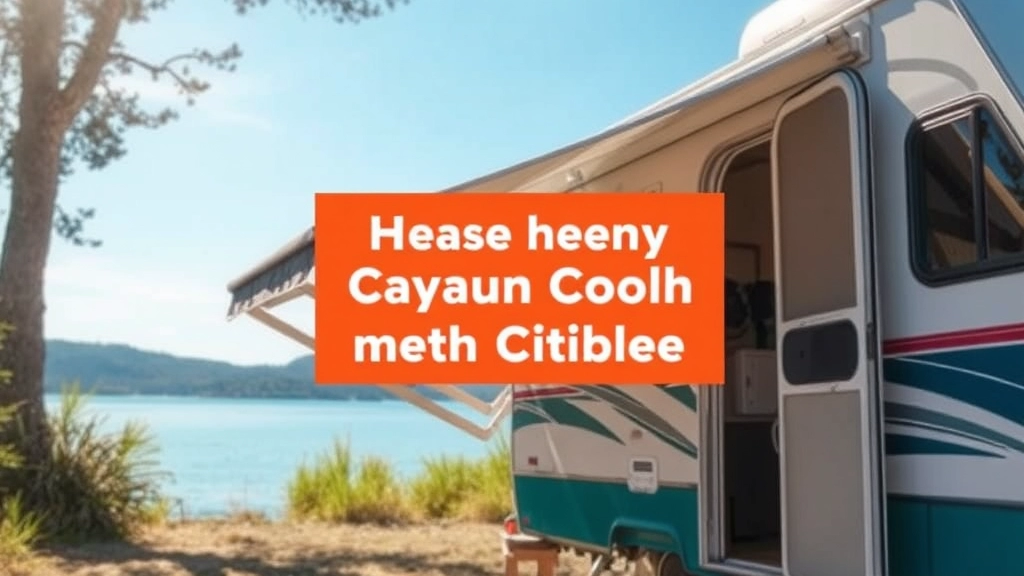Keeping Your Camper Cool in Summer
When the summer heat turns your camper into an oven, knowing how to keep it cool can make all the difference in your camping experience. In this article, we’ll explore essential tips and techniques on how to keep your camper cool in summer, ensuring you stay comfortable and enjoy your trip. From choosing the right campsite location and utilizing reflective sunshades to optimizing ventilation and installing portable air conditioning units, we’ve got you covered.
We’ll also delve into using fans for enhanced cooling, implementing insulation techniques, and taking advantage of natural shade. Additionally, we’ll discuss the benefits of cooling fabrics and bedding, hydration and personal cooling tips, and the importance of maintaining and checking camper systems. With these strategies, you’ll be well-equipped to beat the heat and make the most of your summer adventures.
When planning for the summer, it’s essential to consider the various activities and benefits that camps offer. For example, if you’re looking for a comprehensive list of engaging options, check out the top summer camps for teens. These camps provide a variety of activities that cater to different interests, ensuring that every camper finds something they love.
Additionally, understanding the costs and benefits of summer camp insurance can help you make an informed decision about protecting your investment. This coverage can offer peace of mind, knowing that unexpected events won’t ruin the camp experience for your child.
By exploring these resources, you can ensure a memorable and safe summer camp experience for your family.
Utilizing Reflective Sunshades
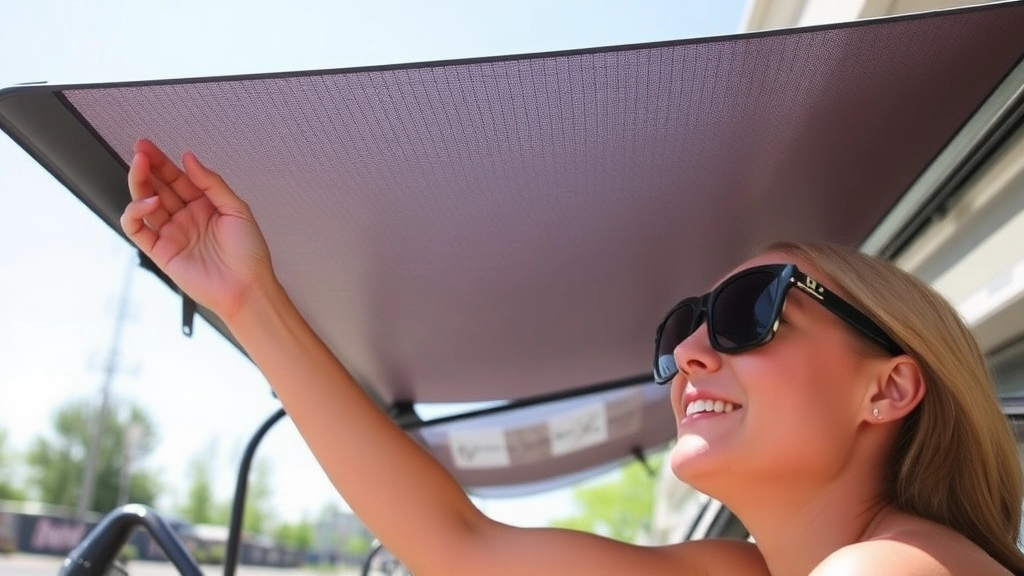
Alright, let’s talk about reflective sunshades. Ever parked your camper under the blazing sun and felt like you were in an oven? Yeah, me too.
Why Reflective Sunshades?
These bad boys are game-changers. They bounce the sun’s rays right off, keeping the inside of your camper cooler. Think of them as your camper’s sunblock.
Real Talk: Do They Work?
Absolutely. Here’s why:
- Temperature Control: They can drop the inside temp by several degrees. No more sweating buckets.
- Protect Your Gear: Sun can fade and damage your interior. Reflective sunshades keep your stuff looking fresh.
- Energy Efficiency: Less heat means your AC doesn’t have to work overtime. Save on energy, save on money.
How to Use Them
You don’t need a degree to figure these out. Just:
- Measure Your Windows: Get the right size. Too small or too big, and you’re wasting your time.
- Install: Pop them on your windows. Most come with suction cups or Velcro. Easy peasy.
- Adjust as Needed: Move them around depending on where the sun is hitting.
Pro Tips
- Double Up: Use them on the outside and inside for extra protection.
- Custom Fit: If you can’t find the perfect size, get a roll and cut your own. DIY for the win.
- Combine with Curtains: Reflective sunshades plus blackout curtains? Now you’re talking serious cool.
Personal Story Time
I remember my first trip without these. Parked in the Sahara, it felt like my camper was melting. Learned my lesson the hard way. Now, reflective sunshades are a must-pack.
So, if you want to keep your camper cool and comfy, reflective sunshades are a no-brainer. Trust me, your future self will thank you.
Optimising Ventilation and Airflow
Ever been stuck in a camper that feels more like an oven than a home? Yeah, me too. It’s no fun. So, let’s dive into optimising ventilation and airflow to keep things cool and breezy. You want to enjoy your trip, not sweat through it, right?
Why Ventilation Matters
First off, why should you care about ventilation? Well, proper airflow can make or break your camping experience. Without it, you’re looking at:
- Stuffy, uncomfortable living spaces
- Increased condensation and potential mould issues
- Poor air quality that can mess with your health
Quick Wins for Better Airflow
Let’s get straight to the point. Here are some quick wins to improve ventilation in your camper:
- Open Windows and Vents: This might sound obvious, but you’d be surprised how many people forget. Open windows on opposite sides to create a cross-breeze.
- Roof Vent Fans: Install a roof vent fan. These bad boys suck out hot air and pull in the cooler air.
- Screen Doors: Use screen doors to keep bugs out while letting fresh air in.
Advanced Techniques
Want to take it a step further? Here are some advanced tips for the pros out there:
- Install Vent Covers: These allow you to keep vents open even when it’s raining. No more choosing between fresh air and staying dry.
- Use Reflective Window Covers: These not only block the sun but also keep the inside cooler, reducing the need for constant airflow.
- Portable Fans: Place portable fans strategically. Use one to blow air out and another to pull fresh air in.
Real-Life Example
Let me tell you about my mate, Dave. He was camping in his van last summer and couldn’t figure out why it was always so hot inside. Turned out, he had all his windows on one side open. Once he opened windows on both sides, the cross-breeze made a world of difference. Simple, but effective.
Checklist for Optimising Ventilation
Here’s a quick checklist to make sure you’re covering all bases:
- Open windows on opposite sides to create a cross-breeze.
- Install a roof vent fan to remove hot air.
- Use screen doors to let air in and keep bugs out.
- Add vent covers for rainy days.
- Use reflective window covers to block out the sun.
- Place portable fans to direct airflow.
Remember, optimising ventilation and airflow is your ticket to a more enjoyable camping experience. Don’t overlook it.
By the way, if you’re looking for more tips on staying cool, check out our sections on Fun and Creative Ideas and Summer Camps with Pools. Happy camping!
Installing Portable Air Conditioning Units
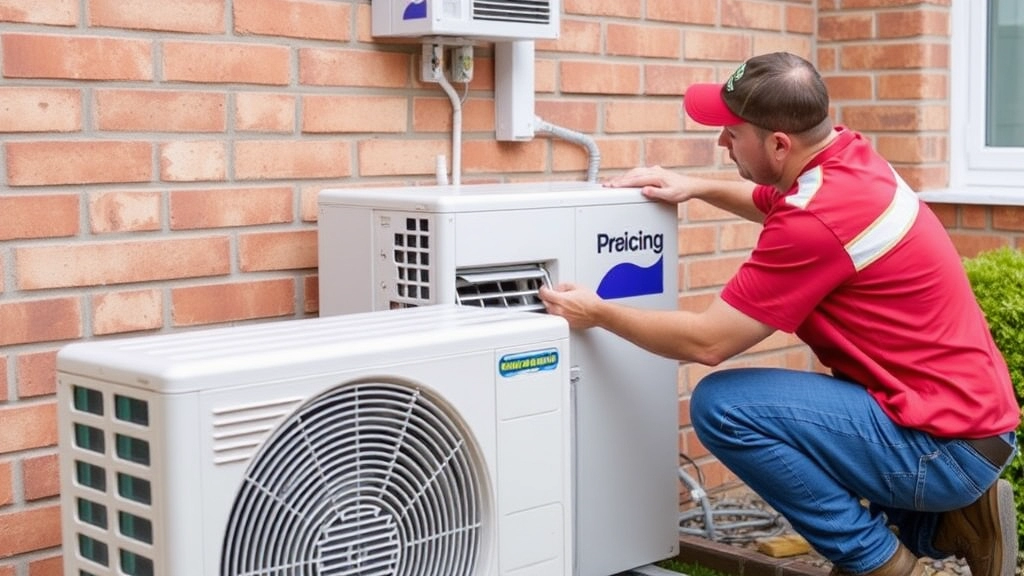
Ever been in your camper, sweating buckets, and wondering if there’s a better way to stay cool?
Well, mate, you’re not alone.
Portable air conditioning units can be a game-changer.
Let’s dive into the nitty-gritty of getting one set up.
Why Portable AC Units?
First off, why even bother with a portable AC unit?
They’re compact, easy to install, and can make a massive difference in comfort.
Plus, they don’t require any major modifications to your camper.
Choosing the Right Unit
Not all portable AC units are created equal.
Here’s what you need to look out for:
- BTU Rating: This measures the unit’s cooling capacity. For a small camper, something around 5,000-8,000 BTUs should do the trick.
- Size and Weight: Make sure it’s not too bulky. You don’t want to trip over it every time you move.
- Energy Efficiency: Look for units with a good energy rating. It’ll save you money in the long run.
- Noise Level: Some units can be loud. Check the decibel rating to ensure it’s not going to keep you up at night.
Installation Steps
Got your unit? Great.
Here’s how to set it up:
- Find the Right Spot: Place the unit near a window for easy venting.
- Ventilation Kit: Most units come with a venting kit. Follow the instructions to set it up.
- Plug and Play: Plug it into a power source and you’re good to go.
Maintenance Tips
Keep it running smoothly with these tips:
- Clean the Filter: Do this every couple of weeks to keep the air clean and the unit efficient.
- Check for Leaks: Make sure the venting hose is secure and there are no leaks.
- Regular Servicing: A quick check-up now and then can prevent bigger issues down the line.
Real Talk
I remember the first time I installed a portable AC in my camper.
It was like night and day.
No more waking up drenched in sweat.
Just cool, comfortable sleep.
And trust me, it makes all the difference when you’re out on the road.
Final Thoughts
Portable air conditioning units are a solid investment for any camper.
They’re easy to install, efficient, and make life on the road so much more comfortable.
So, if you’re tired of sweating it out, give one a try.
You’ll thank me later.
Looking for more ways to stay cool in your camper?
Check out our sections on Utilizing Reflective Sunshades and Using Fans for Enhanced Cooling.
Using Fans for Enhanced Cooling
Ever been stuck in a camper on a hot day, feeling like you’re in a sauna? Yeah, me too. Let’s talk fans and how they can be your best mate for cooling down your camper.
Why Fans?
Fans are a lifesaver when it feels like you’re melting. They circulate air, making it feel cooler without needing a full-on air con. Plus, they’re portable and easy to use.
Types of Fans
- Ceiling Fans: Great for circulating air throughout the camper.
- Portable Fans: Easy to move around and can be placed wherever needed.
- Clip-on Fans: Perfect for targeting specific areas, like your bed or workspace.
Placement is Key
Where you put your fan matters. Here’s what I’ve found works best:
- Near Windows: Helps draw in cooler air from outside.
- In Doorways: Facilitates airflow between rooms.
- High Spots: Hot air rises, so placing fans higher can push it out.
Powering Your Fans
Worried about power consumption? Here’s a quick breakdown:
- Battery-Operated: Ideal for off-grid camping.
- Solar-Powered: Eco-friendly and cost-effective in the long run.
- Electric: Best for when you’re at a powered site.
Real-World Example
I once camped in the Lake District during a heatwave. My portable fan was a game-changer. I placed it near a window, and the cross-breeze it created was a relief. It was like having a mini oasis in my camper.
Tips for Maximum Cooling
- Use Multiple Fans: Create a cross-breeze by placing fans on opposite sides.
- Combine with Sunshades: Reflective sunshades can keep the heat out, making fans more effective.
- Pair with Ventilation: Open vents and windows to enhance airflow.
For more tips on staying cool and safe during your summer adventures, check out our guide on summer camp with transportation and cabin and bunk safety tips.
Implementing Insulation Techniques
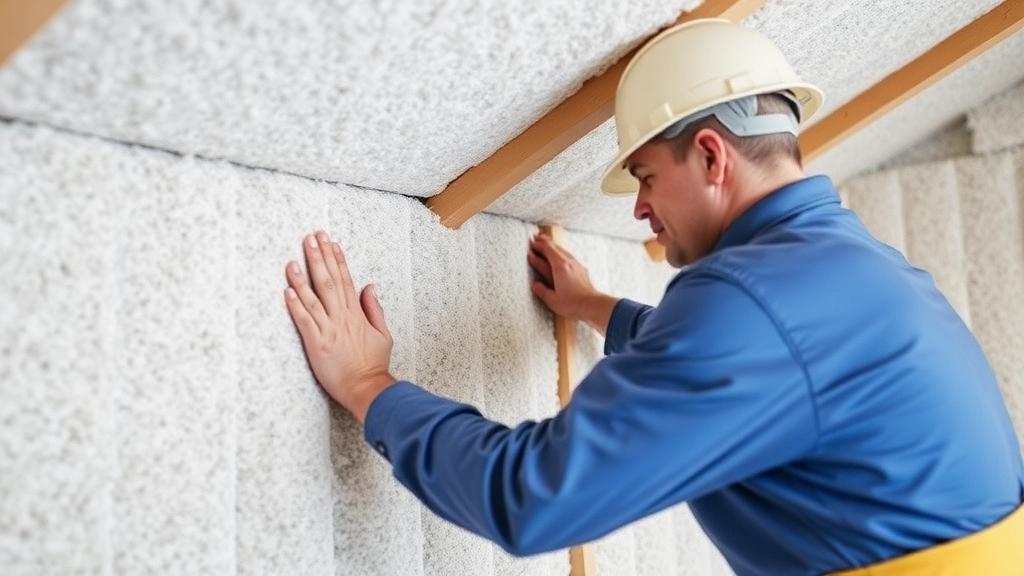
Ever wondered why your camper feels like an oven in summer and a freezer in winter?
Insulation techniques can be a game-changer.
Let’s break it down.
Why Insulation Matters
Insulation isn’t just for houses.
It’s crucial for keeping your camper comfortable.
Without it, all your efforts to cool down or warm up go out the window—literally.
Types of Insulation Materials
Not all insulation is created equal.
Here are some options:
- Foam Boards: Lightweight and easy to install. Great for walls and floors.
- Reflective Insulation: Perfect for reflecting heat away. Ideal for windows and roofs.
- Fiberglass: Traditional but effective. Good for larger spaces.
Where to Insulate
Think about where the heat is getting in or out.
Focus on:
- Windows: Use reflective shades or thermal curtains.
- Doors: Weather stripping can make a huge difference.
- Walls and Roof: Foam boards or fiberglass can go a long way.
DIY Insulation Tips
You don’t need to be a pro to insulate your camper.
Here’s how I did it:
- Measure Twice, Cut Once: Make sure your insulation fits snugly.
- Seal the Gaps: Use caulking or spray foam to fill any cracks.
- Layer Up: Sometimes, one type of insulation isn’t enough. Combine materials for better results.
Real Talk: My Experience
I remember one summer trip where my camper felt like a sauna.
I had enough.
I went all-in on insulation.
Foam boards on the walls, reflective shades on the windows, and weather stripping on the doors.
The difference was night and day.
Taking Advantage of Natural Shade
When it comes to camping, one of the biggest concerns is staying cool, especially during those blistering summer months. So, how do you keep your camper from turning into an oven? One of the best strategies is taking advantage of natural shade.
Why Natural Shade Matters
Ever parked your car under a tree on a hot day and felt the difference? That’s the power of natural shade. It can significantly reduce the temperature inside your camper, making your stay much more comfortable. But how do you find the perfect spot for maximum shade?
Finding the Perfect Spot
First things first, scout your campsite. Look for areas with:
- Large trees: The bigger the canopy, the more shade you get.
- Hilly terrain: Hills can provide natural barriers against direct sunlight.
- Water bodies: Proximity to lakes or rivers can offer cooler surroundings.
Real Talk: What to Watch Out For
While natural shade is a lifesaver, it’s not without its quirks. Here are some things to consider:
- Falling branches: Always check for dead branches that could fall.
- Insects: More shade often means more bugs. Be prepared.
- Moisture: Shady areas can be damp, so make sure your camper is well-ventilated.
Pro Tips for Maximum Cooling
Alright, you’ve found your shady spot. Now, let’s optimise it:
- Park strategically: Position your camper so the largest windows face away from the sun.
- Use tarps and canopies: Extend your shaded area by setting up tarps.
- Adjust throughout the day: If possible, move your camper to follow the shade.
Real-Life Example
I remember this one time camping in the Lake District. We found a spot under a massive oak tree. The difference was night and dayâliterally. While other campers were sweltering, we enjoyed a cool breeze and even managed to have a comfortable nap during the hottest part of the day.
Internal Links for More Tips
Want more ways to keep your camper cool? Check out our sections on Summer Camping Essentials and Top Tips for Summer Tent Camping.
Using Cooling Fabrics and Bedding
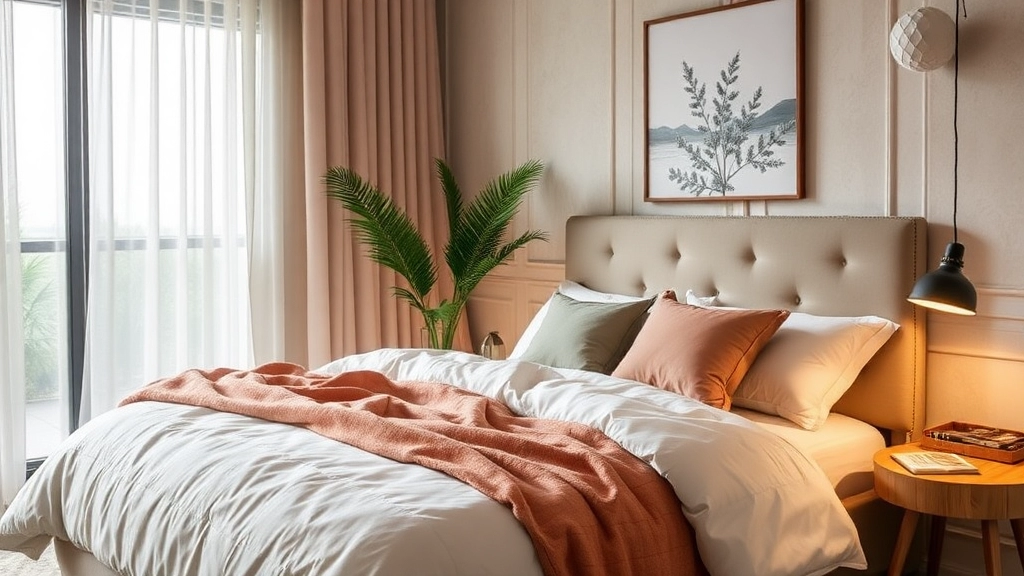
Ever woken up in your camper feeling like you’re in a sauna?
Yeah, me too.
Let’s talk about cooling fabrics and bedding.
Keeping cool at night can be a game changer.
Here’s how we can do it:
Why Cooling Fabrics Matter
- Breathability: Look for materials like cotton or bamboo. They let your skin breathe.
- Moisture-Wicking: Fabrics that pull sweat away keep you dry and comfy.
- Lightweight: Heavy bedding traps heat. Go for something light and airy.
Top Picks for Bedding
- Cooling Sheets: Invest in sheets designed to cool. They’re worth every penny.
- Gel-Infused Pillows: These keep your head cool. No more flipping to find the cold side.
- Light Duvets: A thin duvet is your best friend in a hot camper.
Real-Life Example
I once swapped my regular sheets for bamboo ones.
I slept like a log.
No more tossing and turning.
Quick Tips
- Layer Wisely: Use layers you can easily add or remove.
- Colour Counts: Light colours reflect heat. Dark absorbs it.
Personal Touches
- Cooling Mattress Pads: Adds an extra layer of comfort.
- Chilled Water Bottles: Keep one near your bed for a quick cool down.
Hydration and Personal Cooling Tips
Ever been out camping and felt like you were melting in the heat? Yeah, we’ve all been there. Let’s talk about hydration and personal cooling tips to keep you cool and comfy when the sun’s blazing.
Why Hydration Matters
First off, staying hydrated isn’t just about quenching your thirst; it’s about keeping your body in top form. Dehydration can sneak up on you and ruin your trip faster than you can say “heatstroke.” So, let’s break this down:
- Sip, Don’t Gulp: Drinking water steadily throughout the day is way better than chugging a bottle all at once.
- Electrolytes Are Your Friends: Water’s great, but sometimes you need a little extra. Electrolyte tablets or sports drinks can help replenish what you lose through sweat.
- Avoid Alcohol and Caffeine: These can dehydrate you faster. Stick to water or hydrating drinks.
Personal Cooling Hacks
Now, onto the good stuff. How do you keep your cool when the sun’s relentless? Here are some tried-and-true methods:
Wear the Right Clothes
- Light-Coloured Clothing: Dark colours absorb heat, while light colours reflect it.
- Breathable Fabrics: Think cotton or moisture-wicking materials. They help your skin breathe and keep you cooler.
- Wide-Brimmed Hats: These not only protect your face but also provide some shade.
Use Cooling Accessories
- Cooling Towels: Wet them, wring them out, and drape them around your neck. Instant cool-down.
- Portable Fans: These little gadgets can make a big difference. Clip one to your chair or tent for a breeze wherever you go.
- Misting Bottles: A quick spritz can refresh you instantly.
Eating Right for Hydration
Believe it or not, what you eat can also keep you hydrated. Foods with high water content are your best bet. Think:
- Fruits: Watermelon, strawberries, and oranges.
- Veggies: Cucumbers, celery, and lettuce.
- Soups and Broths: These not only hydrate but also provide essential nutrients.
Stay Cool, Stay Safe
Finally, always listen to your body. If you start feeling dizzy, nauseous, or excessively tired, it might be time to take a break and cool down. Find some shade, drink water, and rest.
For more fun and creative ideas to beat the heat, check out our summer camp craft ideas for kids. And if you’re planning meals for your trip, don’t miss our summer camp meal ideas for nutritious and fun recipes!
Maintaining and Checking Camper Systems
Ever been on a trip and worried about your camper breaking down?
I have.
It’s a real pain when you’re out in the middle of nowhere, and suddenly, something goes wrong.
Keeping your camper systems in top shape is key.
Let’s dive into how you can do that without any fuss.
Why Regular Maintenance Matters
– **Avoid Surprises:** Regular checks prevent unexpected breakdowns.
– **Save Money:** Fixing small issues early can save you big bucks.
– **Stay Safe:** A well-maintained camper means fewer risks on the road.
What to Check Regularly
Here’s a quick list to keep your camper running smoothly:
– **Battery Health:** Check for corrosion and ensure it’s fully charged.
– **Tyres:** Look for wear and tear. Keep them properly inflated.
– **Water Systems:** Inspect for leaks. Clean the tanks regularly.
– **Brakes:** Test them before every trip. Safety first!
– **Electrical Systems:** Ensure all lights and appliances are working.
Real Story: A Lesson Learned
A mate of mine once ignored a small leak in his water system.
It turned into a flood, and he was stuck dealing with a soggy mess instead of enjoying his holiday.
Don’t be that guy.
Tools to Keep Handy
– **Multimeter:** For checking electrical systems.
– **Tyre Pressure Gauge:** Keeps your tyres in check.
– **Cleaning Supplies:** Essential for maintaining water systems.
Quick Tips for Peace of Mind
– **Create a Checklist:** Before each trip, run through a simple checklist.
– **Regular Servicing:** Get your camper serviced by a pro at least once a year.
– **Stay Informed:** Join forums or groups to learn from other camper enthusiasts.
Keeping your camper systems in top shape isn’t just about avoiding headachesâit’s about making sure your adventures are as smooth as possible. For more tips on essential items to bring along, check out our [summer camping essentials guide](https://summercamp.blog/summer-camping-essentials-your-ultimate-guide/). And if you’re planning a trip with kids, don’t miss our [Kindercare Summer Camp](https://summercamp.blog/kindercare-summer-camp-fun-learning-for-kids/) for fun and learning ideas.
FAQs: How To Keep Camper Cool In Summer
What are reflective sunshades and why should I use them?
Reflective sunshades are materials that reflect the sun’s rays away from your camper, helping to keep the interior cooler. They act like sunblock for your camper, reducing interior temperature, protecting your gear from sun damage, and improving energy efficiency.
Do reflective sunshades really work?
Yes, they do. They can lower the inside temperature by several degrees, protect your interior from fading and damage, and reduce the workload on your AC, saving energy and money.
How do I install reflective sunshades?
Measure your windows to get the right size, install them using suction cups or Velcro, and adjust as needed based on the sun’s position. For extra protection, use them both inside and outside your windows.
Why should I consider a portable air conditioning unit?
Portable air conditioning units are compact, easy to install, and significantly improve comfort without requiring major modifications to your camper.
How do I choose the right portable AC unit for my camper?
Look for a unit with an appropriate BTU rating (5,000-8,000 BTUs for a small camper), manageable size and weight, good energy efficiency, and a low noise level.
What are the steps for installing a portable AC unit?
Place the unit near a window for easy venting, set up the ventilation kit as per the instructions, and plug it into a power source.
Why is insulation important for my camper?
Insulation helps maintain a comfortable temperature inside your camper by preventing heat from getting in during summer and retaining warmth during winter. Without proper insulation, your cooling and heating efforts are less effective.
What are the best materials for insulating my camper?
Foam boards are lightweight and easy to install, reflective insulation is great for windows and roofs, and fiberglass is effective for larger spaces.
Where should I focus my insulation efforts?
Insulate your windows with reflective shades or thermal curtains, seal doors with weather stripping, and use foam boards or fiberglass for walls and roofs.
How can cooling fabrics and bedding help keep my camper cool?
Cooling fabrics like cotton or bamboo are breathable and moisture-wicking, helping to keep you dry and comfortable. Lightweight bedding prevents heat from being trapped, ensuring a cooler sleeping environment.
What are the best types of cooling bedding?
Invest in cooling sheets, gel-infused pillows, and light duvets. These items are specifically designed to keep you cool and comfortable throughout the night.

